Where is Yejasuffe coffee beans? the characteristics of hand-flavored flavor of Yejiaxuefei coffee beans.
American beans are mainly balanced, Asian beans are mellow, and African coffee beans are mainly floral and fruity. Among them, Ethiopian coffee has strong lemon and orange aromas, Kenyan coffee has strong raspberry aromas, sour aromas of black plum juice and grapefruit, and sweet sugarcane aromas. The orange aroma of Ethiopian coffee and the raspberry flavor of Kenyan coffee are the most distinctive features of African beans.
When it comes to Ethiopia, the first thing that comes to mind is Yega Sheffield. Because Yega Chuefei coffee exudes extremely complex aroma, showing an excellent taste. The dry aroma of Yejassefi is full of fruit, with strong aromas of dried fruit, strawberry, mango and apricot jam. Wet fragrance is like sweet syrup, like sticky apricot juice, wrapped in plain honey or chocolate. The entrance is not strong, the mellow thickness is medium, the sour taste is not obvious, but it is lively and bright, like fruit black tea. It's memorable after drinking it.

Qianjie believes that the phrase "coffee entrance, flowers in full bloom" is the most appropriate, just as flowers promote the comfort of taste buds and olfactory cells in the nasal cavity. In addition to the fragrance of flowers, the delicate thickness of body, like silk massage in the mouth, feels wonderful. At present, many coffee chemists begin to study the microclimate and soil and water around Yega Xuefei, in order to sum up the planting equation of fine coffee.
Yejia Xuefei coffee producing area
Yirga cheffe is a small town in Ethiopia, located in Sidamosheng in southern Ethiopia, 1700-2100 meters above sea level, and coffee trees are planted in an area above 1800m. Strictly speaking, Yega Xuefei is actually a by-product area of Sidamo province in Sidamo, Ethiopia, located in the northwest of Sidamo, with beautiful mountains and rivers, and is one of the highest coffee producing areas in Ethiopia.
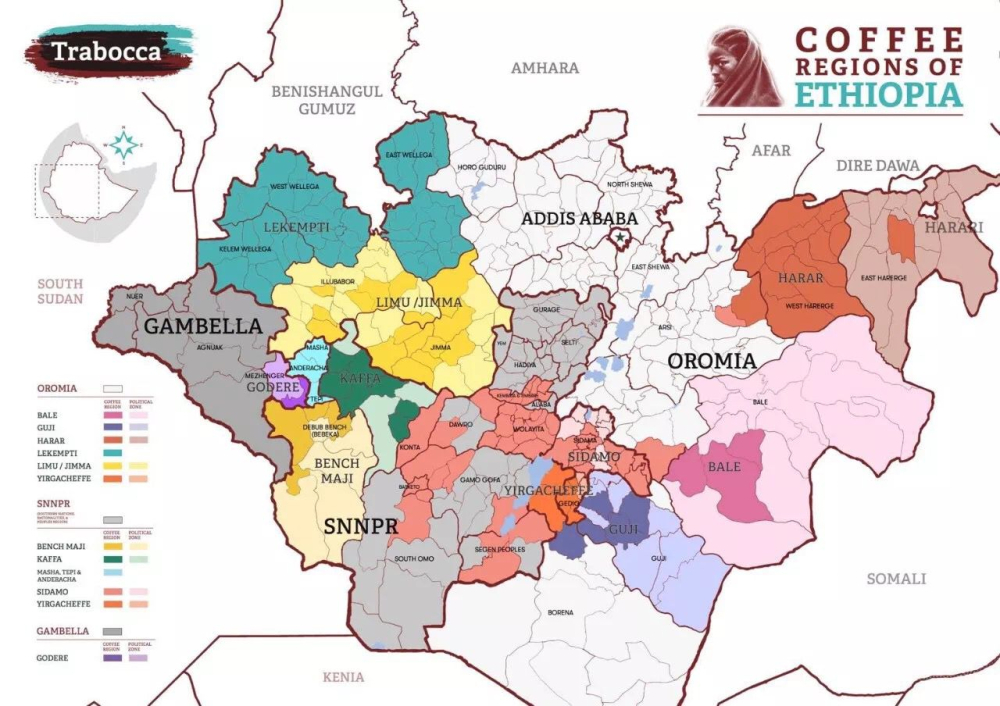
Yejashaffe itself is a small town of about 20, 000 people, and the three neighboring small producing areas, Wenago, Kochere and Gelena Abaya, are also classified into Yega Chefe because they produce coffee with almost the same flavor as Yega Chefe. Ye Jia Xuefei is similar to the neighboring Sidamo in terms of culture and geography, but she seems to be more favored to enjoy the unique conditions. Qianjie believes that it is such a climatic environment that produces Yega Xuefei flavor coffee. As a result, Ethiopia is proud of the flavor of its own coffee, so it is independent from Sidamo and is one of the most famous producing areas in Africa.
Since every household in Yejashafi town makes a living by growing coffee, everyone's coffee production is not particularly large, so after harvesting the fruit, they will sell it to the cooperative processing plant in the town for unified treatment, and then the coffee beans will be exported in the name of the cooperative.
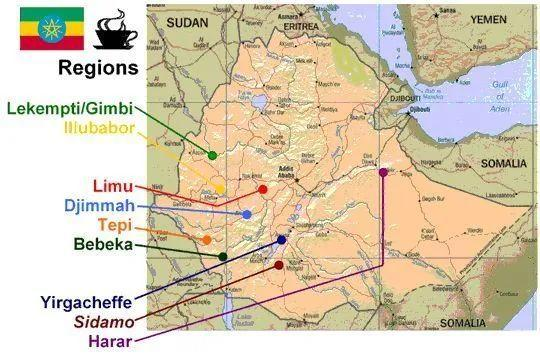
At first, Yejassefi's coffee trees were planted by European monks, and later by farmers or cooperatives. Yega Xuefei is actually constructed by the surrounding coffee communities or cooperatives, including: Hafusha, Hama, Biloya. These mountain villages are foggy, like spring all year round, with a gentle breeze in summer, cool but not hot, rain but not damp, and no cold damage in winter, giving birth to a unique regional flavor of citrus and flowers. Coffee trees are mostly planted in farmers' own backyards or mixed with other crops in the field.
Yejia Coffee Variety
Careful friends will find that many of Ethiopia's coffee beans are native to the local species. Why? Because Ethiopia is the gene bank of coffee, which contains a wide variety of coffee, it is difficult to identify and classify it, and the Ethiopian government is unwilling to disclose information about these varieties because of the protection of natural coffee, so most of the coffee beans exported by Ethiopia are collectively referred to as "Heirloom" native species.
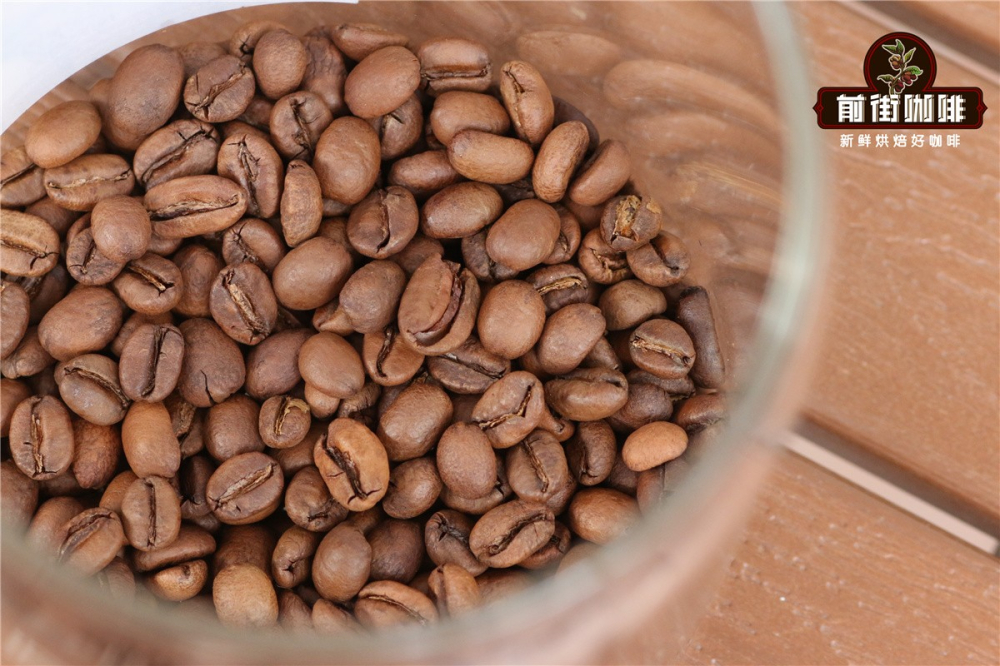
Ye Jia Xuefei Coffee treatment method

Yejashafi coffee, like other producing countries, has a sun and water washing treatment. In fact, Yega Xuefei uses the oldest sun treatment, but after the introduction of water washing in 1972, after decades, the utilization rate of water washing is much higher than that of sun exposure. Qianjie believes that the coffee beans treated by washing reduce the degree of defects and show cleaner and brighter flavor. Compared with water-washed coffee, sun-cured coffee has lower acidity, higher sweetness, clear touch, but slightly lower cleanliness, and produces more berry tonality and complexity in flavor. Such as the rations in front of the street, beans washed Yega Sherfield coffee and Cochel coffee, sun-dried red cherry coffee.
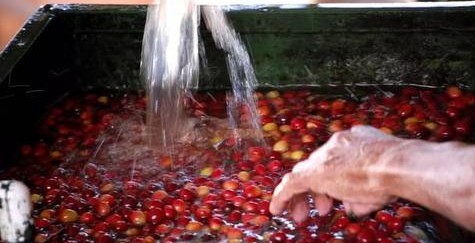
Qianjie cooking suggestion:
If you want to drink a delicious cup of coffee, Qianjie believes that the freshness of coffee beans is a very important link, the freshness of coffee beans can maximize the rich flavor of coffee. The coffee beans shipped in Qianjie are all roasted within 5 days, because Qianjie is well aware that the freshness of coffee beans has a great impact on the flavor. The purpose of Qianjie roasting is "freshly roasted coffee", so that every guest who places an order is the freshest coffee when he receives it. The bean cultivation period of coffee is about 4-7 days, so when the guest gets it, it is the time when the flavor is the best.
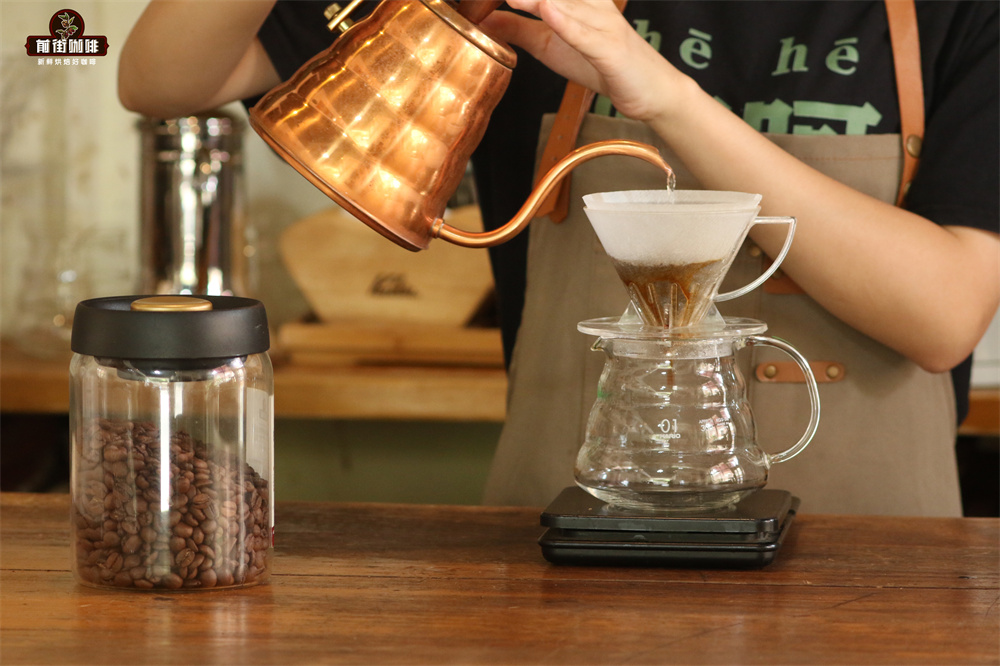
Of course, there are some customers who need help grinding powder in front of the street, which doesn't matter, but Qianjie has to warn: if the coffee beans are ground ahead of time, there is no need to raise the beans, because in the process of transportation, the pressure caused by carbon dioxide in the package can also make the coffee flavor mellow, so when you receive the coffee powder, you can immediately make a cup of coffee to drink. But the coffee powder needs to be brewed in time, because the coffee powder oxidizes more quickly after contact with the air, that is to say, the flavor of the coffee will dissipate more quickly, and the flavor of the coffee is not so good. Therefore, Qianjie suggests buying whole beans, grinding and flushing now, so that we can better taste the flavor of coffee.
Parameters for brewing Yega Chuefei coffee on Qianjie Street:
V60 filter cup, water temperature 90 ℃, ratio of water to powder 1:15, powder quantity 15g, grindability (pass rate of China No. 20 standard screen 80%)
The use of segmented extraction, with twice the amount of coffee powder water for steaming, that is, 30 grams of water for 30 seconds, and the reason for the need for steaming process is to make coffee powder can discharge the internal carbon dioxide gas, so that the latter stage of the extraction is better stable. When the small water is injected around the circle to 125 grams, the injection will be stopped until 225 grams, then the filter cup will be removed after the dripping of the filter cup, and the extraction time will be 2 minutes 39 grams. Next, pick up and shake the whole cup of coffee, then pour it into the cup and taste it.

[washed Cochel Coffee Flavor]: citrus, berry, tea, cream, light nuts
[sun red cherry coffee flavor]: berries, lemons, strawberries, fermented wine.
Ethiopia is a treasure waiting to be discovered and excavated, and the coffee beans produced in the producing areas have different flavors, so there are more than a dozen coffee beans in front of the street. Welcome to Qianjie coffee to experience!
Professional coffee knowledge exchange more coffee bean information please follow the coffee workshop (Wechat official account cafe_style)
For more boutique coffee beans, please add private Qianjie coffee on Wechat. WeChat account: qjcoffeex
Important Notice :
前街咖啡 FrontStreet Coffee has moved to new addredd:
FrontStreet Coffee Address: 315,Donghua East Road,GuangZhou
Tel:020 38364473
- Prev

How about Yejia Xuefei? introduction to the characteristics of the washing flavor of Yega Xuefei Congassi Butterfly
Professional coffee knowledge exchange more coffee bean information please follow the coffee workshop (Wechat official account cafe_style) front street-Ethiopian Konga West Butterfly Yega Chet Coffee introduction Ethiopia Konga West Butterfly Yega Chevy / Yirgacheffe Konga Sede country: Ethiopian varieties: Tibika, local native species grade: G1 treatment: washing altitude: 1800
- Next

Introduction to the Grade and Variety of Yega Xuefei Coffee is it good to describe the flavor characteristics of the top coffee beans?
Professional coffee knowledge exchange more coffee bean information please follow the coffee workshop (Wechat official account cafe_style) Qianjie-Yejia Xuefei classification about Yega Xuefei grading with raw bean rating:-Q1 is the highest, Q2 is second common in China, only g1~g4 classification regardless of washing or
Related
- Beginners will see the "Coffee pull flower" guide!
- What is the difference between ice blog purified milk and ordinary milk coffee?
- Why is the Philippines the largest producer of crops in Liberia?
- For coffee extraction, should the fine powder be retained?
- How does extracted espresso fill pressed powder? How much strength does it take to press the powder?
- How to make jasmine cold extract coffee? Is the jasmine + latte good?
- Will this little toy really make the coffee taste better? How does Lily Drip affect coffee extraction?
- Will the action of slapping the filter cup also affect coffee extraction?
- What's the difference between powder-to-water ratio and powder-to-liquid ratio?
- What is the Ethiopian local species? What does it have to do with Heirloom native species?

